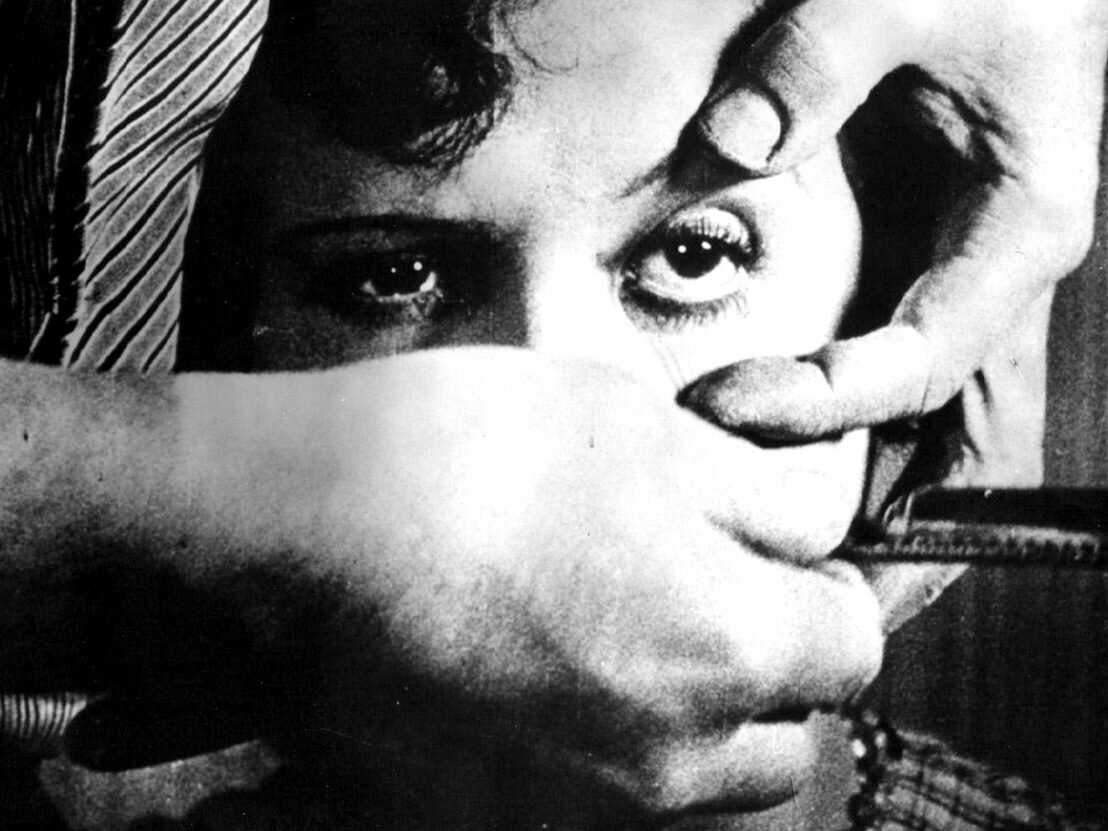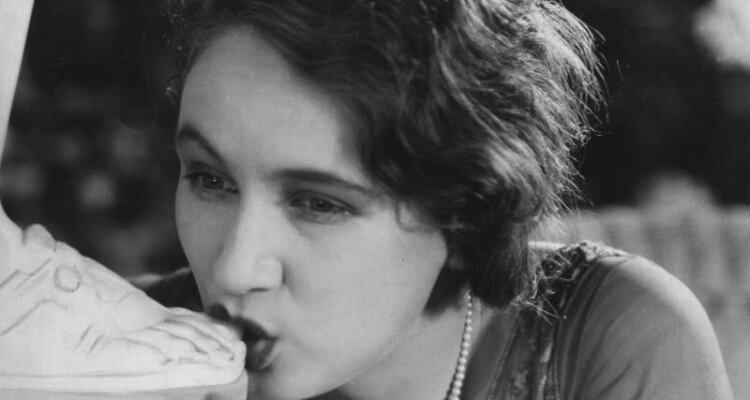The Surrealist Film: Scandal, Terror and Blasphemy
by Lori Stranger
To define something as definitively ‘Surrealist’ is problematic. The term resists stylistic categories, preferring instead strategies of juxtaposition that shock the viewer into new revelations. Michael Richardson describes the essence of Surrealism as ‘refus[ing] to be here but is always elsewhere.’ Unsurprisingly, it is therefore hard to identify what constitutes the Surrealist film. One may even find the typical action-packed thriller adheres to Surrealist strategies of shock and provocation.
To enable a better understanding of what might constitute a Surrealist film it is perhaps best to go back to where it all started. Arriving at the end of the nineteenth century, the Lumière brothers created the first motion picture in modern history with their 1895 L’arrivée d’un train en Gare de La Ciotat. The 50-second silent black and white documentary showed a train arriving at a station. To contemporary viewers, the image professes nothing of the bizarre or shocking but nineteenth-century viewers were terrified and quickly rushed to the exit to avoid an incoming collision. The short film astonished viewers by its realistic illusion and immersive nature. Its powerful ability to affect the audience and imitate the real would become crucial to the Surrealists.
The leader of the Surrealists, André Breton, conveyed an interest in film’s potential for Surrealist activity from an early age and would later claim ‘cinema is the operation of chance’. During his youth, Breton and his friend Jacques Vaché regularly attended cinema screenings. They enjoyed the chance nature of entering an unknown room at any point and leaving whenever they desired only to repeat the process in another screening. Breton would later describe the ‘charged’ sense of freedom he felt from these experiences in which he ‘refus[ed] to be dictated by the given’. These qualities would later crucially inform Surrealist’s rejection of the establishment and praise of the irrational.
Perhaps film’s biggest draw for the Surrealists was the cinema’s environment itself. Ado Kyrou believes the ‘cinema is in essence surrealist’. Its darkened rooms, immersive nature and power to disorient fascinated the group. The cinema was likened to the dream state, as one appeared to be present in reality and yet outside of it, as if ‘suspend[ed] in an ‘other’ state. Like the dream, one doesn’t know what to expect while time is forgotten. There is an uncanniness and unknowability that appealed to the Surrealists aims.
But is there a film that can be classified as specifically Surrealist? Linda William’s claims Un Chien Andalou and L’Age d’Or are ‘the only unquestionably surrealist films’. Arriving from Spain, a young Salvador Dalí and eager filmmaker Luis Buñuel collaborated to create the 1928 Un Chien Andalou. Premiering at Studio des Ursulines with such attendees as Picasso, le Corbusier and Breton, Un Chien Andalou’s first image provocatively asserts its unequivocal Surrealism. A moon emerges from amidst clouds which is then quickly replaced by a man who uses a razor to cut open a woman’s eye (fig.1). (Readers will be pleased to know no actors were harmed in the film’s making, although one dead cow was). The scene’s shocking gruesomeness immediately announced to the audience that one doesn’t need their eyes anymore, we are entering the world of the irrational. Attempts to destabilise the eye and rationality continued throughout the film which lacked any legible linear narrative, plot or discernible message. The awkward juxtapositions and disturbing imagery resists interpretation. The film instead rejects societal morality, encouraging imagery censored in everyday waking consciousness.
Still from Un Chien Andalou (an Andalusian Dog), Luis Buñuel and Salvador Dalí (1929)
Ironically, Dalí and Buñuel hated the film’s public success having hoped for a violent reaction from outraged audience members. Buñuel criticised the ‘imbecilic crowd which found beautiful or poetic something which, basically, was nothing other than a desperate, passionate call to murder’. Dalí also believed the audience ‘has not grasped the film’s moral significance which with unmitigated violence and cruelty is directed against the audience itself’. They remained determined to create a film ‘beyond redemption’, so bizarre and controversial that there was no possibility of public approval.
In 1930 L’Age d’Or did just this. To circumvent censorship, Dalí and Buñuel provided the Board of Control a moderated summary of the film (which I am sure they would soon regret approving). One of the first sound films in France, L’Age d’Or may be read as a satirical comedy about the irrationality and insanity of modern life, the bourgeois’ hypocrisy and the evils of the catholic church. The film is composed of a series of seemingly disconnected vignettes containing such provocative scenes as a couple having sex in the mud during a religious ceremony, a woman who performs oral sex on a statue’s toe and a maid killed by flames while leaving a kitchen as elite party goers ignore her (fig.2). However, it is perhaps the final scene which continues to provoke the most outrage. In reference to Marquis de Sade’s The 120 Days of Sodom, the final sequence titled ‘120 Days of Depraved Acts’ presents an orgy involving four men and eight adolescent girls. Later in the scene, a Christ-like figure emerges from the orgy-castle entrance only to abduct a passing injured girl into the castle where he presumably rapes her. The scene is disturbing, to say the least. The first screening provoked such hatred and outrage Buñuel claimed the film’s financier Charles de Noailles’s mother had to travel to Rome to negotiate with the Pope in order to avoid ex-communication. By December 3rd, members of the League of Patriots and Anti-Jewish league ransacked a hall where the film was being screened, threw ink at the screen and set off smoke bombs. The film was eventually banned on December 11th presumably to Dalí, Buñuel and the Surrealists revelry. Their intentions to provoke and assault the viewer had succeeded.
Still from L’Age d’Or (The Age of Gold), Luis Buñuel and Salvador Dalí (1930)
Surrealism’s aim to confound, shock and unleash one’s ‘id’ impulses perfectly suited the film medium. Unlike painting’s single and immediate illusion, film offered the Surrealists an immersive episode similar to the dream state. Whether Un Chien Andalou and L’Age d’Or may be called the only true last Surrealist films is uncertain; time will only tell.
Bibliography
Dalí and Film. Edited by Matthew Gale. (London: Tate Publishing, 2007).
Durozoi, Gérard. The History of the Surrealist Movement. (Chicago: University of Chicago Press, 2002).
Richardson, Michael. Surrealism and Cinema. (New York: Berg, 2006).


